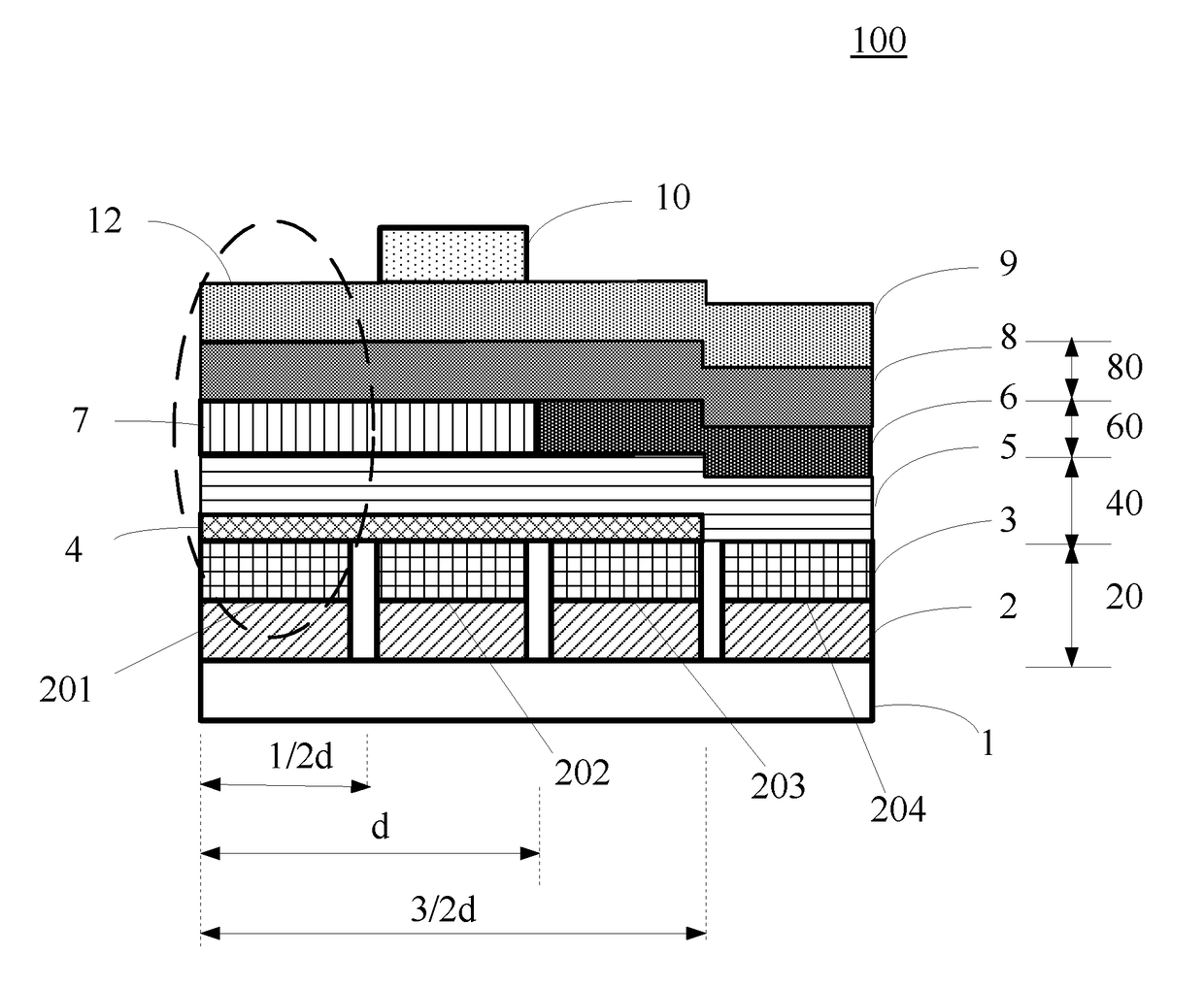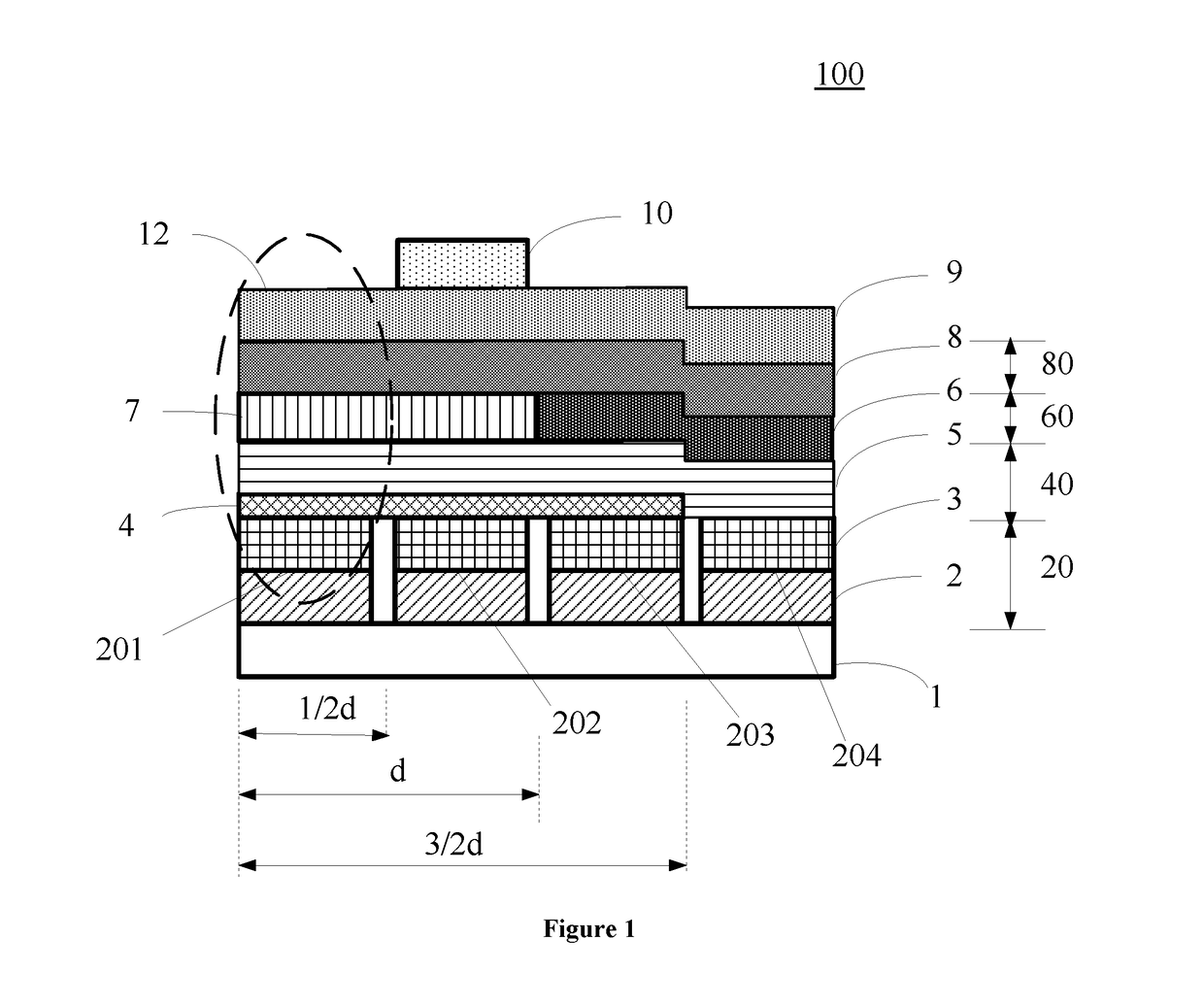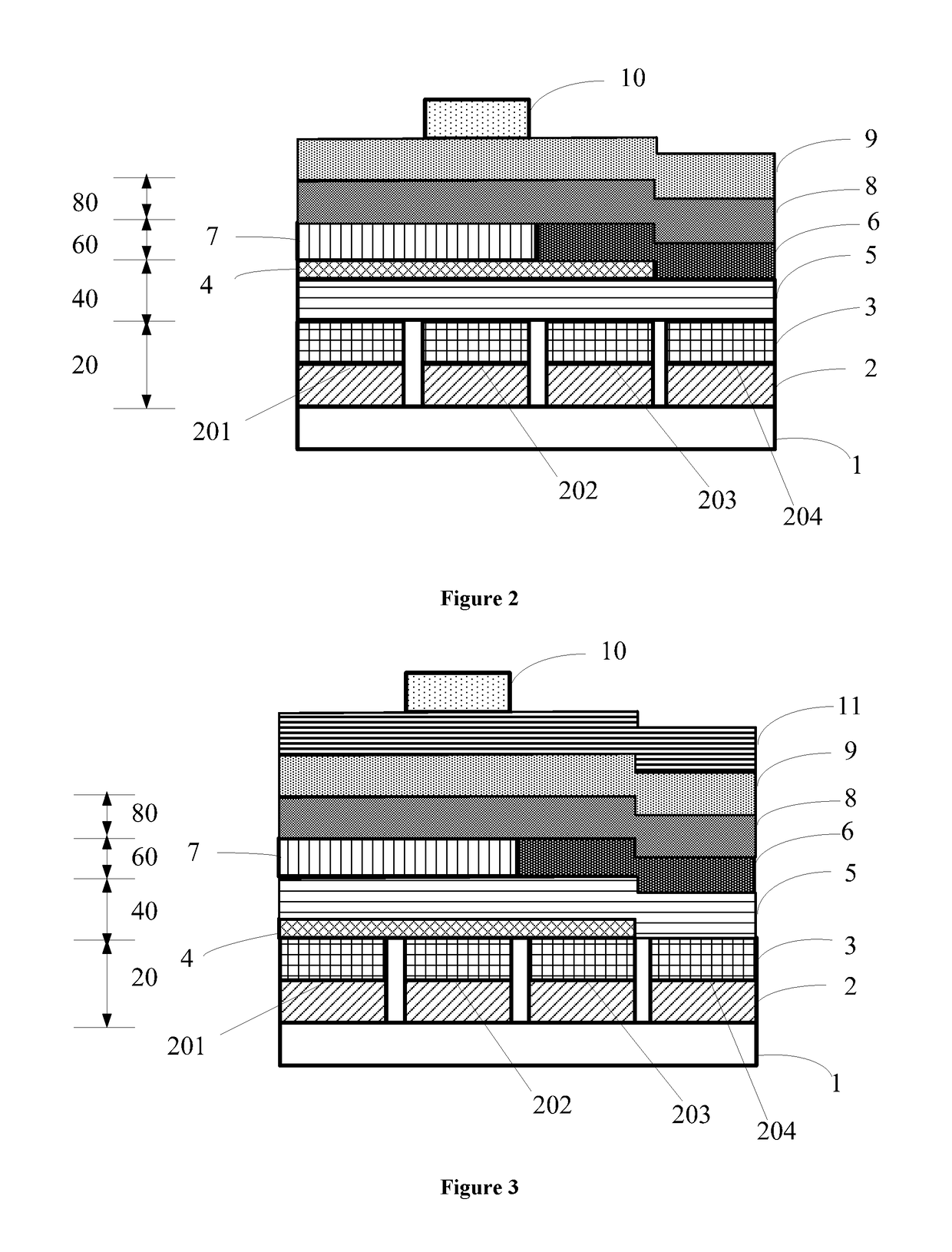Organic light-emitting pixel including four sub-pixels having adjusted microcavity distances
a light-emitting pixel and organic technology, applied in the field of display technologies, can solve the problems of inconvenient cleaning of fmms, fmms may be difficult to manufacture for smaller aperture widths, and the prominentness of existing fmm technology, so as to improve the fabrication yield of the corresponding oled display panel and reduce the difficulty of fabrication
- Summary
- Abstract
- Description
- Claims
- Application Information
AI Technical Summary
Benefits of technology
Problems solved by technology
Method used
Image
Examples
Embodiment Construction
[0038]For those skilled in the art to better understand the technical solution of the invention, reference will now be made in detail to exemplary embodiments of the invention, which are illustrated in the accompanying drawings. Wherever possible, the same reference numbers will be used throughout the drawings to refer to the same or like parts.
[0039]One aspect of the present disclosure provides an OLED pixel.
[0040]FIG. 1 illustrates an exemplary OLED pixel 100. The OLED pixel 100 may include a plurality of subpixels. The OLED pixel may enable subpixel with smaller sizes or widths to be fabricated using existing FMM technology. The OLED pixel in FIG. 1 may include a substrate 1, a first electrode layer 20, a first functional layer 40, a light-emitting layer 60, a second functional layer 80, a second electrode layer 9, and a color conversion layer 10.
[0041]In the OLED pixel, the first electrode layer 20 may be formed on the substrate 1. The first functional layer 40 may be formed on ...
PUM
 Login to View More
Login to View More Abstract
Description
Claims
Application Information
 Login to View More
Login to View More - R&D
- Intellectual Property
- Life Sciences
- Materials
- Tech Scout
- Unparalleled Data Quality
- Higher Quality Content
- 60% Fewer Hallucinations
Browse by: Latest US Patents, China's latest patents, Technical Efficacy Thesaurus, Application Domain, Technology Topic, Popular Technical Reports.
© 2025 PatSnap. All rights reserved.Legal|Privacy policy|Modern Slavery Act Transparency Statement|Sitemap|About US| Contact US: help@patsnap.com



